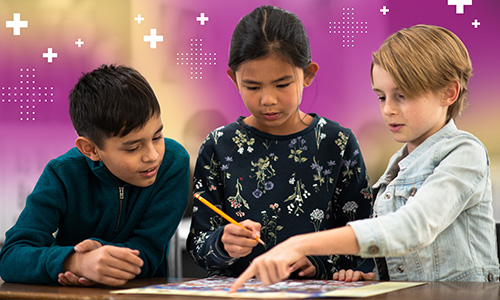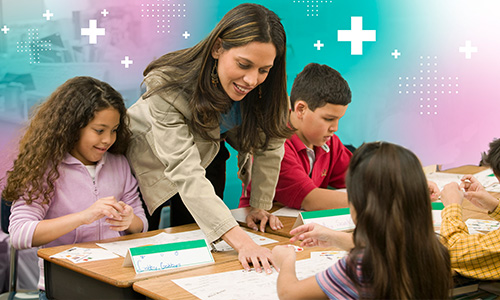
Science is a beacon of pure knowledge in uncertain times, right? Nope. Science is not neutral.
I spent years as both a research scientist and a science teacher. In both roles, I expounded on the virtues of science and its ability to be impartial and unbiased. Only in the last few years have I rethought that notion and how we talk about science with our students. As the Next Generation Science Standards say, “Science is a human endeavor.” It is conducted, interpreted, and applied by people and is, therefore, subject to the same biases and blind spots that all people have.
Treating science as neutral in our classrooms invalidates the experiences of students who have felt excluded or harmed by science, and it leaves all students inadequately prepared to critically evaluate scientific processes and outcomes. To truly equip students as consumers and creators of science, we must guide them as they consider how we build scientific knowledge in an equitable way and how we rectify inequities caused or exacerbated by science.
In this post, I suggest four equity onramps to conversations about science with students and provide examples to illustrate the importance of considering equity as scientists, citizens, and humans.
What is an equity onramp?
Equity conversations can be tough. It’s hard to know where to start and where you will end up.
Equity onramps use approachable questions about scientific process as a gateway. Just as cars use onramps to transition from a quiet street to a busy freeway, teachers can use equity onramps to move more easily into challenging conversations with students. Each onramp allows you to approach a conversation from a different direction, and each facilitates movement into a larger equity conversation. Equity onramps represent categories of equity issues that often exist within science so we can identify, discuss, and ultimately address these inequities.
Treating science as neutral in our classrooms invalidates the experiences of students who have felt excluded or harmed by science, and it leaves all students inadequately prepared to critically evaluate scientific processes and outcomes.
The onramps I suggest here are rooted in the mechanics of science, not in classroom culture. Classroom culture is a critical consideration when establishing equitable science classrooms but is not the focus of these onramps. For more information about promoting equity through classroom culture, see “How to build an equitable learning community in your science classroom”).
Equity onramp #1: Assumptions
Assumptions are the decisions we make to simplify into testable ideas the complex relationships in the natural world. Assumptions are necessary but must be explicit and purposeful to conduct science in an equitable way.
Here’s a good example of assumptions in science: Women were historically excluded from clinical trials for medications because scientists assumed that metabolic processes functioned in the same way for both men and women. We later learned that women metabolize medications differently from men, even accounting for differences in average body size. As a result, dosages are often less accurate, and women suffer from more side effects from medications than men.
Probing questions to challenge assumptions in your classroom
When examining a scientific artifact (a plan for an investigation, a data set, a model), discuss these questions with your students to help you all uncover and challenge assumptions:
- How are the conditions in the investigation or model different from the conditions of the real-world phenomenon being studied?
- What assumptions did scientists make intentionally? What assumptions did scientists make unintentionally?
- What are the potential impacts of those assumptions? Who feels those impacts, and how are the potential impacts distributed across people, places, and time?
- What changes could be made to make the scientific process more equitable? What changes would make the impacts more equitable and/or mitigate the impacts?
Equity onramp #2: Objectives and outcomes
Objectives are the goals or the intended outcomes for a scientific effort, while outcomes are the actual results. Sometimes a scientific effort has explicitly inequitable objectives, but perhaps more often we find scientific pursuits with noble goals, but unintended inequitable results.
The Eugenics movement’s goal of improving humanity by limiting reproduction for those the movement deemed unfit is an obviously and explicitly inequitable objective. Compare this to modern day, at-home DNA tests. These have stated objectives like learning about your ancestry or your genetic predisposition for certain health issues. While these goals are not in themselves inequitable, at-home DNA tests sometimes perpetuate misconceptions about the genetic basis of race and reinforce racist beliefs. They have even been used as proof of whiteness for membership in some white supremacist groups. This was not a stated objective but is an outcome that continues to perpetuate inequity.
Probing questions to explore objectives and outcomes in your classroom
When examining scientific research and processes, discuss these questions with your students:
- What are the intended objectives for the research or process?
- What stakeholders exist for this research or process (that is, who cares about this research or process)? What objectives might they have that differ from the intended objectives?
- How do the outcomes of this research or process affect people? Who do the outcomes affect most? Who do the outcomes affect least?
- How can we use science and/or engineering to mitigate, redistribute, or remove inequitable impacts?
Equity onramp #3: Interpretations
Interpretations are the patterns we notice, questions we ask, and explanations we propose in response to data, observations, and results. Data does not “speak for itself.” The patterns a scientist notices and the questions they ask next are reflections of the scientist’s experience in the world. As a result, the causal links that get tested reflect the cumulative experiences of the scientific community. More diversity within the scientific community means more diversity in the explanations and interpretations we examine.
Data from high-stakes educational assessments shows lower test scores in general for several populations of students, including students of color and neurodiverse students, than for white, neurotypical students. The meaning of the data and, therefore, the follow-up studies and proposed solutions, depend on whether you interpret that discrepancy as a reflection of student ability, evidence of biased assessments, or the result of an inequitable education system. It’s bigger than choosing between labels like “opportunity gap” or “achievement gap”(though that’s important, of course). It’s an interpretation with real consequences for students.
Probing questions to explore interpretations in your classroom
When examining a relationship between factors, discuss these questions with your students:
- Is the relationship causal or correlational? How do we know?
- What other factors might influence or relate to the given relationship?
- Are additional factors studied in the research? If not, what information would be needed to determine the effect of these factors?
- Are there parts of the results that do not fit with the given explanation? If so, what might explain those parts?
- What perspectives are missing from the interpretation? How can we ensure that we consider diverse perspectives when interpreting these results?
Equity onramp #4: Interactions
Interactions are the impacts of a scientific concept or process on a human-designed system, like an economic system. The impacts of interactions become inequitable when they combine with existing inequities of human systems. Science and engineering are critical tools through which we can mitigate inequitable impacts.
To illustrate this point, consider redlining. Redlining is the practice in which banks and other financial institutions delineated areas that were deemed high risk for lending. These areas were typically determined based on the racial demographics of a region. Neighborhoods with a higher proportion of people of color tended to be labeled as too high of a risk to receive loans, limiting economic investment in these areas. This political and economic policy interacts with scientific concepts to produce tangible impacts.
Today, areas that were redlined in the past are more heavily affected than neighboring areas by a host of environmental impacts. These impacts include reduced air quality and higher average temperatures, both of which come with an array of health and safety risks that now disproportionally impact the populations living in previously redlined areas.
Probing questions to explore interactions in your classroom
When examining a scientific concept within a human-designed system, discuss these questions with your students:
- How does this science concept affect different people? How are the impacts distributed across people, place, and time?
- What social, cultural, and political factors influence the distribution of these impacts?
- How can we use science and/or engineering to mitigate, redistribute, or remove the negative impacts?
Not sure where to start?
If you’re not sure about the best way to try out equity onramps for conversations with students, start small. Find a science-based news story with equity implications and read it with your class. Use the equity onramps to start a conversation and be open to where it takes you and your students.
Below are a few science stories involving equity and written specifically for students that may work well in hour classroom:
- Physical science: “Reusable plastic bottles release hundreds of pollutants into water”
- Life science: “Urban pollution can pose risks to kids’ immunity and more”
- Earth science: “Do hot neighborhoods affect everyone equally?”
- Engineering: “How can engineering address human rights issues?”
- General: “Does the way we fund scientific research benefit everyone equally?”
Want to learn more?
Check out these resources about incorporating equity conversations and cultivating more inclusive and equitable classrooms, when you’re ready to dig deeper:
- Let’s Talk: A Learning for Justice Guide (Note that an updated version is scheduled for release soon.)
- Justice in the Science Classroom webinar
- “Equity in science education”
- “Teaching tools for science, technology, engineering, and math (STEM) education”
I love science. I want to share that love of science with every student. To do that, we need to be critical of times when science has fallen short or downright failed. Only then can we push the field to do and be better.







